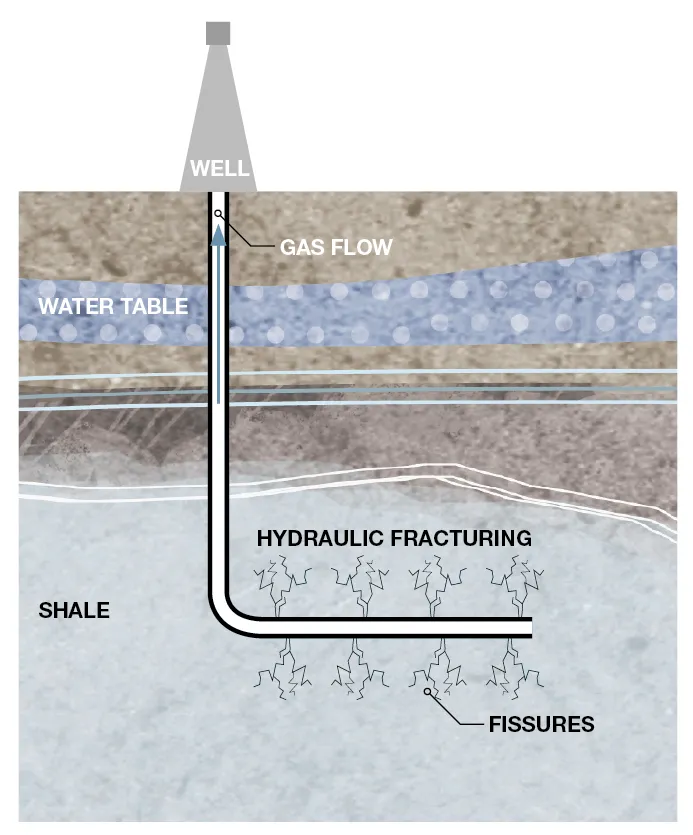How fracking works

Technically known as hydraulic fracturing, ‘Fracking’ involves using water pressure to introduce fractures into the gas-bearing layers of rock containing trapped natural gas, allowing it to flow out.
To bring about the fracturing, the water is first mixed with sand, along with additives to speed the process up. These are injected down kilometre-long steel pipes that are concreted into place to prevent contact with water aquifers on the way down to the gas-bearing layers.
In the US, controversy has surrounded the additives used in fracking. In the UK, Cuadrilla has revealed exactly what additives it uses, none of which are associated with health issues. At its Weeton site, a 99.75 per cent water/sand mix was used, with very dilute concentrations of hydrochloric acid, biocide and polyacrylamide – a chemical found in many cosmetics.
After around 90 days, the fracking process is stopped, and the gas starts flowing freely up into a small surface collector and distribution unit – and will continue to do so for decades.
It is believed the tremors were down to a combination of the highly pressurised water and the specific geology of the site. The site owners released a statement claiming that if this event did happen again it was unlikely to cause a major quake, stating that "I'f these factors were to combine again in the future, local geology limits seismic events to around magnitude 3 on the Richter scale as a worst-case scenario."
Follow Science Focus onTwitter,Facebook, Instagramand Flipboard